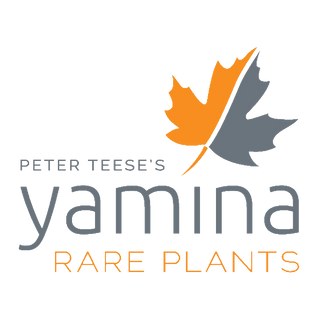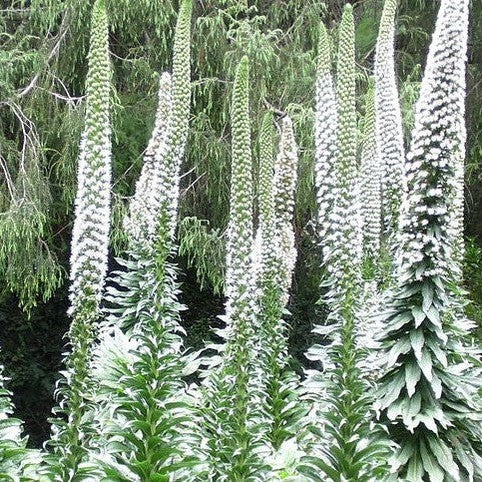Description
Common Name: Tower of Jewels
Scientific Name: Echium simplex
Family: Boraginaceae
Origin: Native to the Canary Islands
Growth Habit:
Echium simplex is a biennial or short-lived perennial plant, typically growing to a height of 1-2 meters. In its first year, it forms a rosette of lance-shaped leaves, while in the second year, it sends up a tall, unbranched flower spike.
Leaves:
The leaves are grey-green, lanceolate to oblong, and covered with fine hairs, giving them a slightly fuzzy texture. They grow in a basal rosette during the first year and along the flowering spike in the second year.
Flowers:
The striking feature of Echium simplex is its dense, cylindrical inflorescence, which can reach up to 1.5 meters in height. The flower spike is adorned with numerous small, tubular white to pale pink flowers. The blooms are highly attractive to bees and other pollinators.
Flowering Season:
Flowering typically occurs in late spring to early summer.
Habitat:
In its native range, Echium simplex thrives in rocky, well-drained soils and sunny locations. It is adaptable to similar conditions in Australia and can be grown in garden beds, borders, and rockeries.
Cultivation:
- Soil: Prefers well-drained, sandy or loamy soils.
- Light: Requires full sun to thrive.
- Watering: Drought-tolerant once established; moderate watering is needed during the growing season.
- Frost Tolerance: Can tolerate light frost but may require protection in colder regions.
Propagation:
Propagation is usually by seed. Seeds can be sown in late summer to early autumn for flowering the following year.
Pests and Diseases:
Generally pest-resistant, but may occasionally be susceptible to aphids and spider mites. Good air circulation can help prevent fungal diseases.
Uses:
- Ornamental: Ideal for use as a focal point in garden beds due to its dramatic flower spike.
- Pollinator-friendly: Attracts bees, butterflies, and other beneficial insects.
Caution:
Echium simplex, like other Echium species, contains pyrrolizidine alkaloids, which are toxic if ingested. Handle with care and keep away from pets and livestock.
Environmental Impact in Australia:
While Echium simplex is not currently classified as an invasive species in Australia, it is essential to monitor its growth and spread. Gardeners should take care to prevent it from escaping into natural bushland where it could potentially compete with native flora.
By providing proper care and monitoring, Echium simplex can be a stunning and beneficial addition to Australian gardens, contributing to biodiversity and garden aesthetics.

